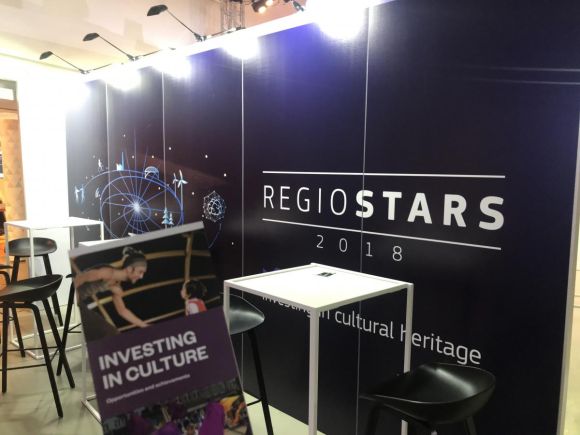
This year marks the celebration of the EU cultural heritage, which brings the importance of safeguarding and promoting Europe’s culture and history. But, in what way is the EU helping to preserve its regions' cultural heritage?
The European Week of Regions and Cities brought together various ambitious projects which are examples of how investing in cultural heritage can transform regions and cities.
Oda Helen Sletnes, Norway's Ambassador to the EU, stated that preserving the culture of the European countries strengthens community engagement, promotes cultural diversity and creates new job opportunities.
I got the chance to discuss briefly the importance of cultural investment with Maciej Hofman, Policy Officer at the Directorate-General for Education, Youth, Sport and Culture for the European Commission. In his opinion, there are both social and economic benefits to investing in cultural heritage. “Through European Structural and Investment Funds in the EU, many projects support cultural heritage and the cultural sectors. They help build a strong sense of belonging and ensure that Europe’s heritage sights and history are being passed onto the future generations.”
The officer is confident that investing in cultural heritage projects helps create more job opportunities for less-developed regions. He adds that “Cultural heritage projects also help us foster a stronger sense of belonging and create communities which are open and tolerant.”
As someone who lives in Wales, it was exciting to be able to learn more about the Language and Recreational Centre Nant Gwrtheyrn, one of the finalists of the 2018 RegioStars competition. The Language Centre, which has existed for over 40 years, has now been developed into a cultural hub where people from all around the world can come to learn more about the Welsh culture and language.
“I think it’s important for Wales to have such a magical place in an interesting location, where people can come and learn about the culture. If they decide to take a language course, they stay for a week and are surrounded by only Welsh-speaking staff, which helps them get a feel for the language”, shares Jim O’rourke, Founder and Project Manager.
The success of this centre, which now hosts over 50,000 visitors a year, has been defined by the efficient allocation of the European funds, which it has been receiving for over 40 years. The EU’s investment in the preservation of this cultural centre has resulted in more opportunities for employment: “The region, with its beautiful nature, has mostly been fed by the tourism industry- with people coming and staying here, we’ve been able to create more jobs in the area”.
Recognizing the significance of the EU’s Investment Fund for sustaining the economic viability of the region, Jim is anxious about West Wales’ future in a post-Brexit reality: “We’ve had European objective 1 funding for 30 years, and we are still one of the poorest regions in Europe. The investment has made a difference, but it hasn’t sorted the problem. Losing that funding overnight will be a disaster for the region.”
It is clear that preserving a region’s cultural heritage must start at a local level. In order for any kind of cohesion policy to be implemented effectively, local authorities need to be able to communicate to the citizens about the role the European Union plays in improving their quality of life. When it comes to investing in Europe’s cultural heritage, it is essential that there are designated spaces where culture can be celebrated and showcased.
”Cultural spaces will never survive solely on tourism and visitors. It’s all about local activity and enlightening the population on the importance of interactive lectures and workshops, which can truly showcase the value of their culture and language,”-says Martin Wots, who has been involved in preserving the cultural heritage in the municipality of Hå, Western Norway.
Investing in the European countries’ cultural heritage doesn’t mean simply renovating ancient buildings and monuments. It means keeping communities together, united by an appreciation for their history and language, and it is the solution for issues of unemployment and vast economic disparities. During the European Week of Regions and Cities, we had the chance to see the amazing results which such investments have produced. Projects like these also help to improve the cross-national relations between regions and foster a better understanding between partner countries.
Finally, as Corina Räceanu, Director of Programmes at the Intercultural Institute Timisoara concluded during her presentation on the rehabilitation of Timisoara’s cultural heritage, “Working with culture means working with emotion.”
Therefore, we should think about not only the economic benefits of investing into cultural heritage but also the values that will be preserved and passed on to the future generations.
Written by: Yana-Maria Milcheva and Yilaria Potemza
Edited by: Bruna Tomsic



